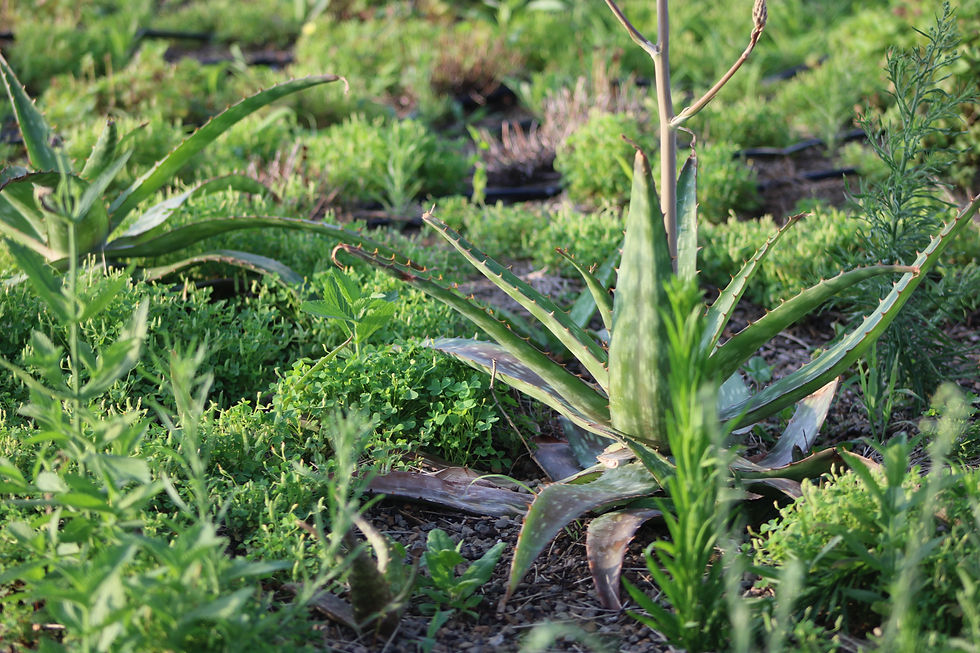Early Spring Soil
- August Kind

- Mar 6
- 3 min read
As we step into the bright, warm days of March, so does the world around us, especially here in Houston. The mulberry trees bud and the dewberry bushes bloom, all eagerly awaiting the warm, wet of the coming spring and early summer.
On the farm, I am planting a mix of cover crops consisting of barley, radish, and sorghum; our late winter vetch coming up now in tangled rows. One by one, the resilient seeds always show themselves off. I think back to our first round of cover crops this last autumn, made of clover, barley, and sunnhemp. The sunnhemp grew rapidly, twice the height of the barley before they both went to seed and I mowed them down. This mowing and growing of these seeds in general is done for the nutrients they provide for the soil and the life that is encouraged by their presence in the fields. The clover, however, came with time. Once the nights cooled and the sun lessened, the clover sprang from the soil, a sweet and shy beauty. Every season and every new planting brings a lesson.
With the incredible weather gracing Houston, that surely will not last, the farm is also preparing in other ways. A beautiful yellow-green carpet of wood sorrel decorates the Southeast field, weaving their way through rows of seedling leeks and the vibrant flags of onions. If you care to take a moment, you will surely spot a honey bee or two, bouncing between the delicate blooms. While this plant is wonderful for the pollinators, they also serve as a foraging plant for us, high in oxalic acid. Originally, wood sorrel came to the farm as a volunteer, which is to say, they were not intentionally planted here by us, the farmers. Whether by wind or animal, who is to say?
In the time since the arrival of the first wood sorrel, I have tread carefully over the area, only disturbing what was needed for planting the leek and Swiss chard seed, and nothing else. Taller, faster seeding weeds have been pulled from the area and as such, I have been able to further cultivate what is know as the 'weed seed bank'. In effect, the seeds of the plants we hope to grow more of are encouraged by the removal of other plants that would out compete them. In other seasons, we may find anoher ground cover that serves this same purpose. For now, the wood sorrel holds us in their golden embrace. As the temperatures rise and the peak of summer arrives, the mosaic carpet that covers the farm will also be the space's best defense against the heat and water loss. What a wonderful service to come from a 'volunteer' plant and the sector forces that brought their seeds to this place!
Nature is constantly showing us the way. As the farmer, it is obvious to see the 'good' that practices such as cover cropping bring. The carbon of the plant matter feeds the insects and microorganisms of the soil. The nutrients that are used to grow these plants are returned, back to the soil from which they came from. This is part of a process called nutrient cycling. Healthy ecosystems require food and protection and in exchange, they bring life. As we step into the Spring and prepare ourselves (physically and mentally, haha!) for Summertime, what does it mean to feed our ecosystem? What challenges, such as weeds, are also the answer to our problems? I hope you enjoy pondering these points as much as I do!














Comments